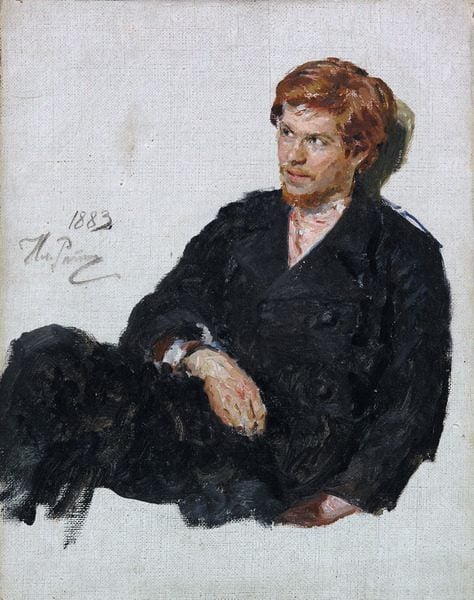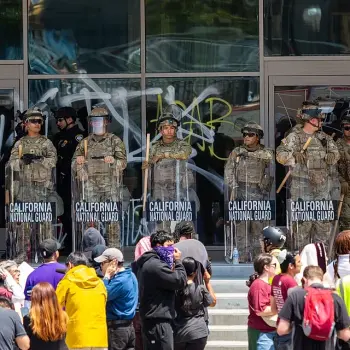They aren’t really revolutionaries. “When, for example, did adult revolutionaries hold hunger strikes lasting a whole twelve hours or seize buildings and then demand that the university authorities give them food and water?” Trueman notes that Che Guevara, a real revolutionary, hid out in a Bolivian jungle. Never once did he whine to the Bolivian government he was trying to overthrow about the hard living conditions he was enduring or demand that he be supplied with food and water. “A cynic might say that even our revolutionaries are pathetic these days.” Nor are they really worried about Arab lives. Far more Arabs have died in Syria, but no one is demonstrating for them.
I would add that they are not really anti-war. As Ramesh Ponnuru says, in a Washington Post column about what to call the protesters, they are all for the war as waged by Hamas:
A leading group backing the demonstrations, Students for Justice in Palestine, exulted in the terrorist attack “against the Zionist enemy” on Oct. 7. Protesters at George Washington University and Cornell University have been chanting, “There is only one solution: intifada revolution.” (“Globalize the intifada” is another popular slogan.) Terrorist-group regalia has been spotted at protests at Yale, Princeton, Stanford and the University of Minnesota. . . .Jewish students have been subjected to such chants as “We don’t want no Zionists here!” and “the 7th of October is going to be every day for you!”
And they aren’t really “pro-Palestinian.” Says Ponnuru, “The massacres of that day have, after all, been a proximate cause of immense Palestinian suffering. The Columbia protesters have not hesitated, either, to shun Palestinians and Palestinian Americans they consider insufficiently confrontational.” How about “pro-Hamas”? Well, some protesters say they aren’t supporting that particular organization. “Anti-semitic”? Closer, but some Jews are among the protesters. Ponnuru says the best description that all would agree to is “anti-Israel.”
But Trueman goes beneath the surface rhetoric to find a deeper pathology. He says of all of the contradictions,
This also points to the nihilism that lurks just below the surface. When one notes the craziness of some of the protests—queers professing solidarity with Palestine, for example, or a drag queen leading children in pro-Palestinian chants—it becomes clear that, for all of the blather about “human rights,” these people share no common vision about what it means to be human. The thing that unites these groups is neither concern for Arab lives nor a respect for Islamic culture. They are united only in wanting to tear down. In short, these protests are a manifestation of the Mephistophelean spirit of negation or, in religious terms, the spirit of desecration. To borrow from Marx, all that is holy must be profaned. What is to replace it—Shariah law, drag queen story hour, Judith Butler reading groups—is anybody’s guess. There is no agreed moral vision here. There is only consensus on a hatred of Jews, of Israel, of America, and of what is. And ironically, it comes from those who enjoy some of the greatest privileges that America has to offer.
Hatred of what is.
As in the transgendered who hate the reality of their bodies and think that their self-identification, with or without the help of hormones and surgeries, can change “what is.” They too are among the protesters, even though their lives would be short if they went to the radical Islamic states they are championing.
Hatred of what is. That also explains postmodernist constructivism, the relativist view that we each create our own realities, as well as the other Gnostic rejections of reality that have become commonplace in people’s lives.
Hatred of what is manifests itself in the denial of all truth, goodness, and beauty, and the meaning of life. In short, as Truman says, in nihilism.
See also my post The Need for Chaos on the phenomenon of “political nihilism,” the impulse to just “burn it down,” which exists on the left but also on the right.
See also my post Progressive Nihilism, which discusses Ashley Frawley’s point that “the vanishing of a utopian horizon left only a politics of subversion, in which disruption became an end in itself.”
And yet another Cranach post, Horror and the New Nihilism, based on insights from my former student John Ehrett, who notes, among other things, how “the traditional “good/evil” dyad is replaced by the dyad “freedom/oppression.”
Illustration: Portrait of a Nihilist Student by Ilya Repin (1883), Public domain, via Wikimedia Commons













